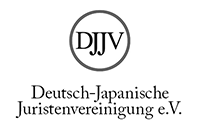Konzerneigenschaft horizontaler japanischer Unternehmensgruppen?
Abstract
Japanese industrial groupings, a paradigm in Western writing about Japanese Economics and Society, can be classified into two types: horizontally connected groups (horizontal keiretsu) made up of leading companies representing key industries of Japan and organized around banks and general trading companies, and vertically integrated groups (vertical keiretsu) represented by giant manufacturers and clustered around a parent company that controls subsidiaries and affiliates which mainly function as suppliers and distributors within the group.
The concept of horizontal keiretsu has recently come under closer scholarly scrutiny. However, the German Federal Financial Supervisory Authority (BaFin) still qualifies horizontal keiretsu as Gleichordnungskonzerne, i.e. groups of independent companies under unified control (einheitliche Leitung) to the effect that its members are treated as a creditors unit (Kreditnehmereinheit) in terms of the German Banking Act (Kreditwesengesetz). This article proves that horizontal keiretsu – at least in their current form – do not qualify as being under unified control and thus are not to be treated as a creditors unit.
After elaborating on the historical background of Japanese industrial groupings, namely the development and dissolution of the prewar zaibatsu, the article outlines the factors contributing to the cohesion in a horizontal keiretsu: (i) the so-called lunch club system (shachô-kai), i.e. regular lunch meetings of the presidents of major group companies; (ii) cross-shareholding within the group, (iii) the main bank system, (iv) the in-group trading through general trading houses (sôgo shôsha), and (v) the system of interlocking directorates.
Whilst these factors and thus the cohesion in Japanese industrial groupings were in their prime in the late 1980s, they have been in steady decline for the last decade: Prevailing market principles drive companies to liquidate their cross-shareholding ties. According to the report of the 7th survey conducted by the Japanese Fair Trade Commission (FTC) on the state of Japanese corporate groups, the cross-shareholding ratio of companies affiliated within the six major horizontal keiretsu – Mitsubishi, Mitsui, Sumitomo, Fuyô, Daiichi Kangin and Sanwa – has been declining since 1990. In fiscal 1999, it fell to approximately 20 percent. Furthermore, the crisis of the banking sector has led to more stringent lending to affiliates and cross-group mergers of financial institutions. Actually, Sakura (belonging to the Mitsui group) and Sumitomo banks, Sanwa and Tôkai banks, as well as The Industrial Bank of Japan and Fuji and Dai-ichi Kangyô banks have merged. Additionally, in order to reduce their exposure to the risk of stock price fluctuations, major Japanese banks sold a total of ¥ 6.5 trillion worth of shares in fiscal 2002 and a further ¥ 4.5 trillion in fiscal 2003. Business transactions among affiliates have been decreasing. Purchases within a group accounted for an average of 6 percent of the total purchase volume, down from 7 percent in fiscal 1996. The major part of in-group purchases were those with general trading firms; however, with the increasing globalization transactions with affiliated general trading firms declined and the trading houses are losing their relevance. Similar developments can be observed with regard to the exchange of personnel within the groups. Of the six major group companies, 37 percent accepted board members sent by affiliates while the ratio was approximately 70 percent in 1981. And even the backbone of the corporate groups, the lunch club meetings, are found to serve the exchange of information rather than fulfilling decision-making functions.
As shown by the FTC survey findings, the bonds within horizontal keiretsu that bring affiliated companies together, such as capital, personnel and business relations, have been weakening over the past years. This contributes to the conclusion that the cohesion within horizontal keiretsu is not strong enough to warrant labeling them as companies being under unified control.






